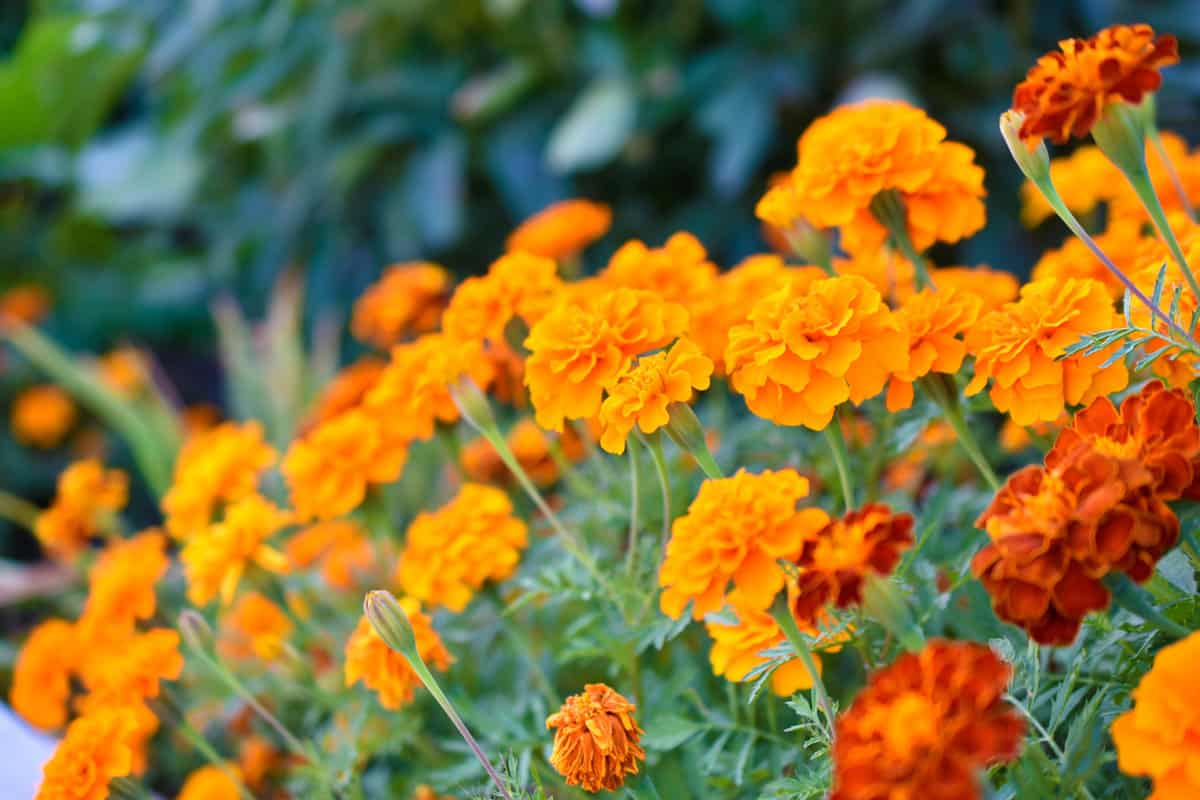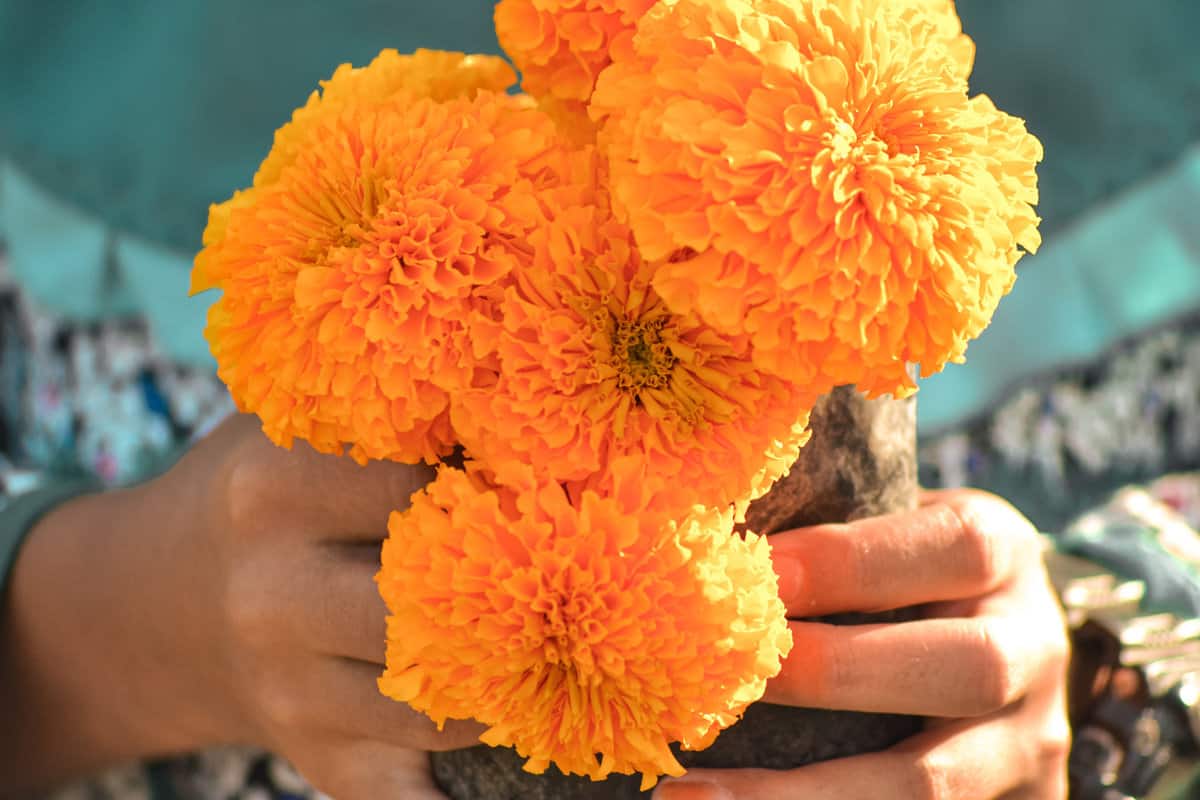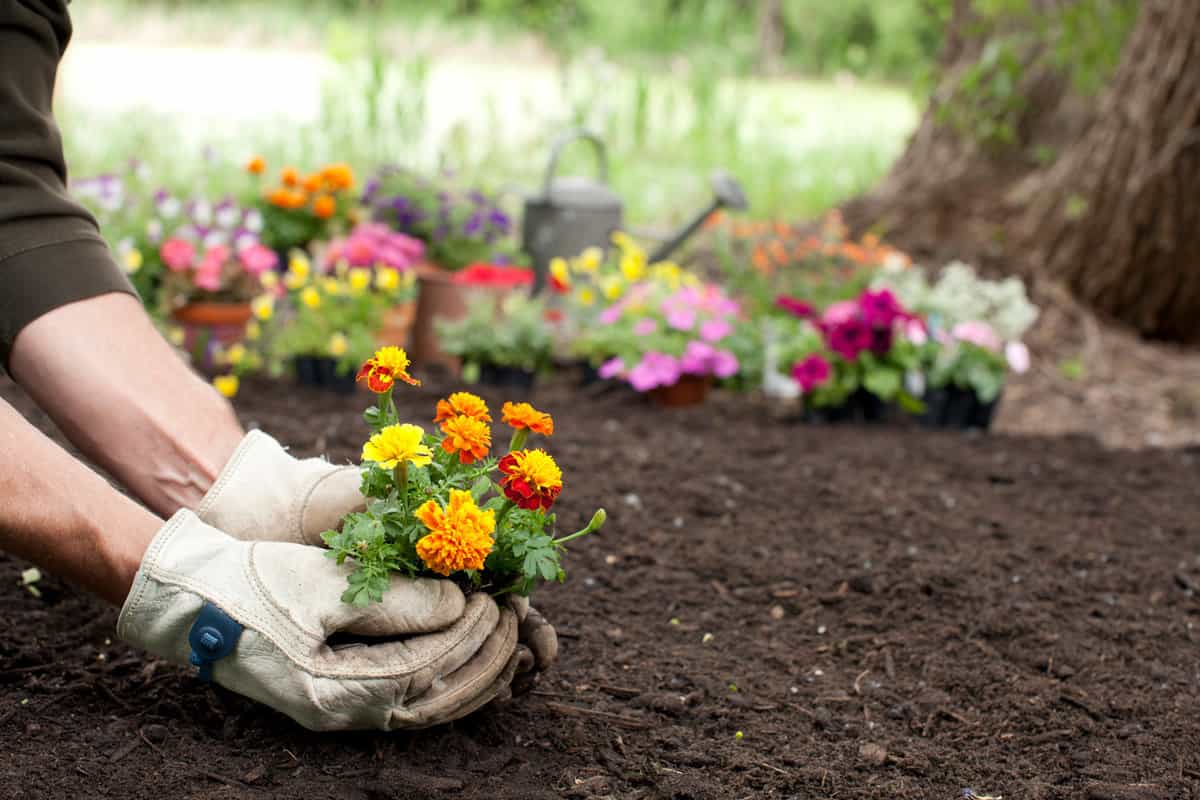Figuring out which plants will grow the best in your garden can sometimes be tricky. Do you want to try planting a few marigolds but have no idea where they're native to? Can you grow marigolds in any climate? We will answer these questions, among others, throughout this article. Let's dive in!
For those wanting to plant marigolds, this flower species is native to subtropical America, spanning from the southwestern United States into South America.
However, marigolds have become naturalized in the United States across the entire country, so you should be able to grow them in most places.
Some marigold varieties even grow natively throughout the north-central and northeastern US, Canada, and Alaska.
As we start this post, we will cover all things marigolds and discuss where these flowers are native. Whether you're in the southwest United States, curious about this bright-colored plant, or have other questions about growing one, we're here to help. With that said, let's get right into it!
![Man gardening holding Marigold flowers in his hands - Where Are Marigolds Native To [Breakdown By State]](https://gardentabs.com/wp-content/uploads/2022/10/Man-gardening-holding-Marigold-flowers-in-his-hands-Where-Are-Marigolds-Native-To-Breakdown-By-State.png)
Where Do Marigolds Originate?

Since marigolds have been around for hundreds of years in this country, it's not always easy to figure out exactly where they originate.
However, from what experts can tell, marigolds are native to southwestern and tropical North America, all the way into South American countries like Mexico.
In the US, you can expect this bright flower to be native in states like Arizona, New Mexico, and adjacent portions of California, Colorado, Nevada, Oklahoma, Texas, and Utah.
Therefore, it has quite a range in terms of geographical coverage. As mentioned above, marigolds are also natively growing in the northeastern US, Alaska, and Canada.
This bright orange, yellow, and red flower is a staple plant throughout Mexico and South America. You'll likely see it while driving through the various Mexican territories and back through the United States border.
What USDA Zones Can I Grow Marigolds?
You can generally grow marigolds throughout USDA zones 2-11. These flowering shrubs do well in warmer weather, so expect one to be more successful in a climate like Arizona or Nevada.
According to garden experts, marigolds tend to have longer blooms in zones ten or higher, where the temperatures don't drop near or below freezing.
You want to remember that this beautiful species is more equipt to handle tropical weather versus cold, arid conditions. Moreover, your plant will need plenty of sunshine and water to grow properly, so a few conditions will need to be met.
Of course, that's not to say you can't have marigolds in a garden that sees snow and cooler weather. You won't have as long of a flowering period, but that may not bother you.
What Temperatures Can Marigolds Tolerate?

Marigolds will tolerate weather that stays above 40 degrees Fahrenheit. As we said, these flowering shrubs do better in tropical, warm ecosystems, so planting one in Michigan may not be ideal.
Considering that marigolds originate throughout the southwestern United States through South America, you want to try and grow one in that type of environment.
It's also important to remember that most marigold varieties are annuals, meaning they don't come back the following year after winter. So, if the temperatures drop below 40 degrees, you likely won't see any further growth from a marigold.
Even though this species is hardy, a marigold will not be frost tolerant. Regardless, your marigold won't usually come back next year, so if you want to enjoy this plant for a little while, there isn't much difference.
What USDA Zone Are Marigolds Perennials?
Although these flowering species are typically annual, there are some USDA zones where you can grow them as a perennial. That said, you'll need to plant the following marigold varieties in zone 9-11 for them to return for years on end:
- Mexican tarragon (Tagetes lucida)
- Lemmon's marigold (Tagetes lemmonii)
- Mountain marigold (Tagetes palmeri)
If you try and grow another type of marigold in these warmer zones, it likely won't be able to come back again in the spring. As we said, most marigold plants are annuals, which you can't change.
You also want to ensure that your perennial marigolds don't get colder than 40 degrees more than once or twice in wintertime. If this flower freezes, the chances of it surviving become very slim.
Can You Grow Marigolds In Florida?

Yes! Growing marigolds in Florida is very easy since the weather is so nice. As we covered, tropical climates are great hosts for marigold plants, as they don't usually become too cold.
Therefore, growing your flowers throughout Florida will work out just fine. According to Lukas Nursery, gardeners in Florida should be able to see reliable blooms from their marigolds throughout the summer.
It's also worth noting that many Floridians use marigolds as a natural insect/mosquito repellant. Marigolds attract "good" insects to your garden, which essentially prey on the bad ones.
Some good insects your marigold plant will repel include tomato hornworms, cabbage worms, thrips, squash bugs, and whiteflies.
So, planting a marigold could be a great decision if you have vegetables growing in your yard.
Can I Grow Marigolds Along The East Coast?
Yes, as long as the weather where you live stays above 40 degrees throughout the year, you should be able to grow marigolds. Since most of the east coast falls into USDA zones 7-10, you can typically plant tropical species without running into problems.
However, states toward the far northeast, like Connecticut, Massachusetts, Maine, etc., do get colder towards November-February, so growing a marigold can be tricky.
Therefore, you want to consider the winters where you are, regardless of state, before purchasing a marigold. The last thing you want is only to see your flower live for a few months.
Are Marigolds Considered Flowers?

Although marigolds do produce beautiful flowers, they are technically herbs. Marigolds belong to the genus 'Tagetes,' and makeup roughly 50 species of annual herbs of the aster family (Asteraceae).
So, if you're looking for one at a nursery, they'll likely be in the herb section. Marigolds have been cultivated throughout South America for thousands of years, as they hold healing qualities.
Like many herbs, you can use marigold plants for tea, seasoning, and even a natural dye to give cheese and butter a more appealing yellow color.
Marigolds also fight against common garden pests, making them a perfect addition to your fruit or veggie garden. This plant is full of surprises, hence why so many gardeners love it.
In Mexican cultures, the marigold is a sacred flower, often used to celebrate the Day of the Dead. These gorgeous orange, red, and yellow flowers also symbolize beauty, warmth, creativity, and a drive to succeed, and who doesn't love that?
How Big Do Marigolds Get?
You can typically expect a mature marigold to reach anywhere from six inches to three feet tall. Again, this isn't a large plant by any means, so you want to grow a few marigolds together to fill a space.
With that said, you can grow rows of marigolds around a fruit or vegetable garden to protect them or use these as a decorative shrubs towards the front of your home.
Most marigolds are annual varieties, so you might even prefer to grow them in pots on your patio or front door area. There's no "wrong" way to plant a marigold.
It's also more common for perennial marigolds to grow larger than annuals, as they have more time to mature in the ground.
Are Marigolds Easy To Grow And Manage?

Yes. Marigolds will generally be easy to grow if you plant them somewhere warm. As we said, this flowering herb does best in tropical and southwestern US climates, where the temperatures don't usually drop below 40 degrees.
Especially if you want to grow and harvest perennial marigolds, it's imperative you keep them somewhere with mild year-round weather. Remember: marigolds aren't frost tolerant.
According to experts, you also want to plant marigolds in full sun to see the biggest blooms. On top of that, marigolds in the full sun will produce flowers all summer, so that's another incentive.
It's also worth mentioning that most marigold varieties are easy to start from seed. So, if you're looking for a fun garden project for the family, we recommend trying this species!
Are Marigolds High Maitanance?
No. Marigolds won't require too much attention or upkeep to thrive. Since this plant doesn't like extensive pruning, you also can let your marigold grow freely as an annual or perennial.
This herb species can also handle periods without water, making it perfect for drought-prone ecosystems. Since marigolds repel garden pests, you don't usually need to worry about an infestation anywhere near them.
That can be helpful for your other plants, whether they're fruits, vegetables, or flowers.
If you're trying to find a plant to repel larger creatures, we recommend French, African, and Signet marigolds, as deer and rabbits find their odor offensive.
So, if you need a flowering plant for your front porch, backyard, or even a bright window inside, marigolds are a great choice.
To Finish
Whether you have marigolds in your landscape or want to plant them, it's always good to know where they come from. We found that marigolds are native throughout the southwestern United States and South America, covering various countries and territories.
Marigolds prefer tropical, warm climates and cannot handle freezing weather. Even if your plant is an annual variety, growing it in the cold will likely result in stunted growth or even death.
Therefore, keep marigolds within USDA zones 2-11, preferably towards nine or higher.
Made it to the end? Check out these helpful related gardening articles below!
Are Marigolds Good For Your Vegetable Garden?
Do Deer Eat Marigolds? [And How To Prevent That]
Pesticides Vs. Insecticides - Which Is Better For Your Home Vegetable Garden?
